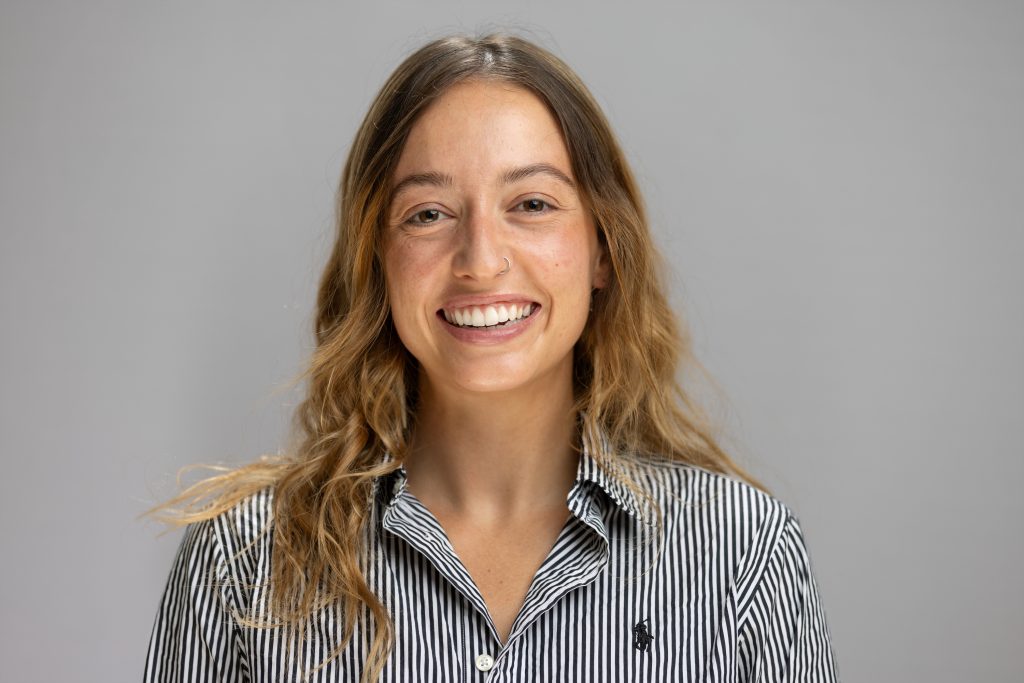New faculty profile: Sarah Kezar specializes in weed ecology and management

Sarah Kezar joined the UW–Madison faculty in August 2025 as an assistant professor in the Department of Plant and Agroecosystem Sciences.
What is your hometown? Where did you grow up?
I grew up in both Goshen, IN and Thief River Falls, MN.
What is your educational background, including your previous position?
I received my bachelor’s and master’s in plant and soil science from Oklahoma State University and a Ph.D. in agronomy from Texas A&M University. I did my postdoctoral training at Cornell University prior to joining UW–Madison.
What is your field of research, and how did you get into it?
I grew up on a hobby farm where we had 60 acres of alfalfa and a small cow-calf operation. This experience, along with active involvement in FFA and 4-H, is where my appreciation for agriculture first took root. My interest in weed science, however, didn’t emerge until I took a chance on a Ph.D. program in the discipline. I was drawn to the integration of agronomy, biology and ecology to manage weeds, which are some of the most persistent and adaptable robbers of crop yields. I quickly became fascinated by the ability of weeds to adapt to diverse management strategies and climate conditions. Then, I became particularly interested in the weed seedbank (because it is a reservoir of genetic diversity that drives this adaptability) and how to develop management strategies to reduce seedbank contributions from herbicide-resistant weeds.
What are the main goals of your current research program?
The ultimate goal of my research is to improve our understanding of how to target seed production and dominance of Wisconsin’s most troublesome weed species (e.g., common waterhemp, giant ragweed, velvetleaf, marestail, and barnyardgrass) while simultaneously preserving diversity by not targeting species that cause little to no yield damage. A bonus goal would be to predict common weed management strategies and environmental conditions (e.g. cold, wet springs followed by dry, hot summers) influence the quantity of seedbank contributions from weeds that escape in-season management and the downstream effects on herbicide-resistance evolution and weed adaptations over time.
What was your first visit to campus like?
It was during peak senescence in the fall, which made for a beautiful visit, and the campus community also felt welcoming and vibrant.
What classes do you teach?
I’ll be teaching weed biology and management, advanced topics in plant science and technology, as well as invasive plant identification and management.
What’s the most important lesson you wish to convey to students?
Weed science goes far beyond row crops. It includes managing weeds in pastures and rangelands, natural areas, invasive species, aquatic weeds, and even integrating precision technologies and robotics. It’s a diverse and dynamic field with real-world impact.
Do you feel your work relates to the Wisconsin Idea? If so, how?
Even small, long-term changes in weed management practices can have large impacts on the density and diversity of the weed community in agricultural systems. My research projects will incorporate the needs of extension researchers to help develop integrated, multi-tactic approaches that are both practical now and adaptable for future innovations.
What’s something interesting or surprising about your area of expertise that will make us sound smarter at parties?
Of the roughly 250,000 plants species worldwide, about 3%, or 8,000 species, behave as weeds. Of those 8,000 or so weed species, just 200 species are responsible for 95% of weed problems in global cropping systems.
What are your hobbies and other interests?
I’m a midwestern country girl, so I enjoy pheasant hunting with my dog, fishing and snowboarding. I’m also excited to return to barrel racing in the professional rodeo circuit after a long hiatus since competing as a collegiate athlete on the Oklahoma State University Rodeo Team and holding a pro card.

